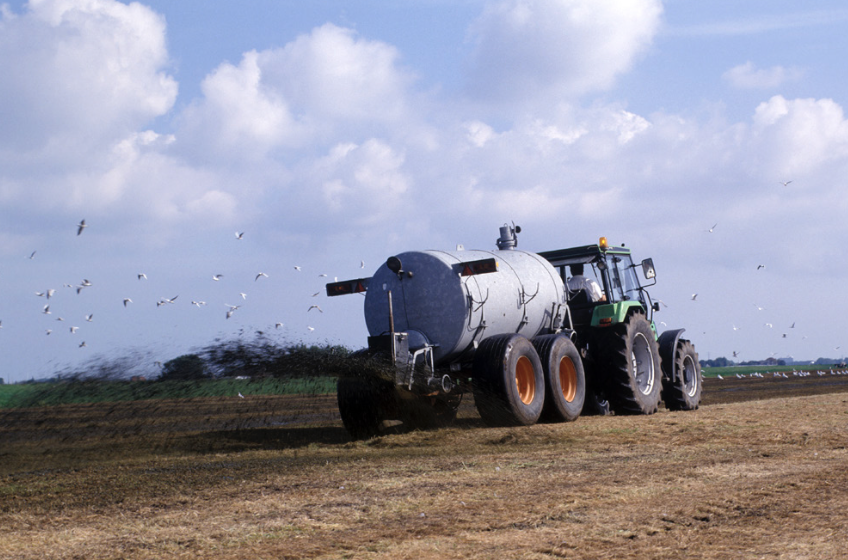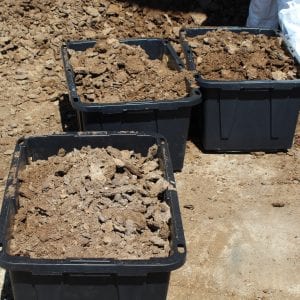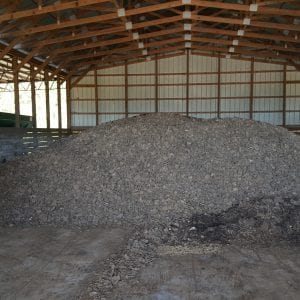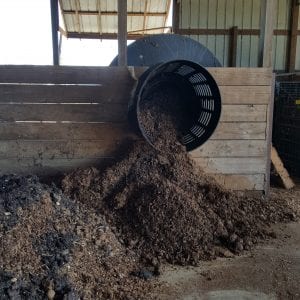Crop Production

Organic soil amendments can be a beneficial and cost-effective alternative to fertilizers. But you need to know the right ones to apply to your land. Learn approved applications of various organic matter.
Soil amendments of organic origin (SAOO) are gaining popularity among Alabama farmers looking for alternatives to costly fertilizers. Organic amendments provide essential nutrients to plants as well as help to rebuild soil organic matter, improve microbial activity, enhance water infiltration, improve water-holding capacity, and promote soil aggregation.
The qualities of SAOO vary tremendously due to differences in their sources, levels of processing, storage, etc. It is important, therefore, that farmers understand these differences and the SAOO options that are available in order to make wise selections for their land.
Biosolids
Biosolids are the primary, organic solid by-product produced through treatment of municipal/domestic sewage sludge by municipal wastewater treatment facilities. Biosolids vary widely in their physical form and appearance depending on the moisture content. Some biosolids look like black slurry or liquid suspension (less than 4 percent solid); others look like moist earthlike material (less than 50 percent solid); and still others are drier in appearance (more than 90 percent solid).
In recent years, recycling efforts have increased, leading to disposal of treated biosolids on farm, forest, or mine land. The treatment is done primarily to reduce pathogen densities and vector attraction potential as well as decrease metal concentration in accordance with the regulatory requirements of the Environmental Protection Agency’s (EPA) Title 40 Part 503 of the Code of Federal Regulations (CFR). The treatment process is also known as stabilization and is achieved through any of these methods: (1) adjustment of pH by addition of quick lime to wet sludge, (2) digestion, (3) composting, or (4) heat drying.
Depending on the degree of treatment and pathogen densities, biosolids are categorized into Class A biosolids, Class B biosolids, and Exceptional Quality biosolids. Although the three types of biosolids are safe for land application, additional requirements are imposed on Class B biosolids.
Class A Biosolids
Class A biosolids are treated to an extent where no detectable pathogens are present. However, they must meet the ceiling concentrations of metals as defined in CFR Part 503. This is defined as the maximum concentrations of metals that can be present in biosolids at any given time for land application (table 1). Sewage sludges that do not meet these requirements are not considered biosolids and may not be land applied.
The total lifetime applications of biosolids to a field are also limited by the cumulative loading of regulated metals as indicated in table 1. Cumulative loading refers to the total amount, in pounds per acre or kg per hectare, of each metal from all lifetime applications of biosolids to a field. When the total amount added for any one of the regulated metals listed in table 1 reaches the limit, biosolids application to that field should be stopped. Selected properties of Alabama-generated municipal biosolids are presented in tables 2 and 3.
Table 1. Commonly Present Metals in Biosolids and Ceiling Concentrations and Cumulative Loading Cutoff Rates for Agricultural Lands
NL = No limit
Source: US EPA, 1993 and 1994
| Metal | Ceiling Concentration (mg/kg) | Cumulative Pollutant Loading Rates (kg/hectare) |
|---|---|---|
| Arsenic | 75 | 41 |
| Cadmium | 85 | 39 |
| Copper | 4,300 | 1,500 |
| Lead | 840 | 300 |
| Mercury | 57 | 17 |
| Molybdenum | 75 | NL |
| Nickel | 420 | 420 |
| Selenium | 100 | 100 |
| Zinc | 7,500 | 2,800 |
Table 2. Properties of Municipal Biosolids Generated in Alabama: Class B Biosolids from 28 Municipalities
| Variable | Mean | Standard Error | Minimum Value | Maximum Value |
|---|---|---|---|---|
| Total N (%) | 3.7 | 0.4 | 0.04 | 9.1 |
| NH4-N | 0.8 | 0.2 | <0.01 | 4.2 |
| NO3-N | 0.2 | 0.1 | <0.01 | 1.5 |
| Total P2O5 (%) | 6.0 | 0.8 | <0.01 | 43.7 |
| Total K2O (%) | Not determined | |||
| Solids (%) | 21.9 | 4.6 | 1.6 | 91.0 |
| pH | 7.4 | 0.80 | 6.9 | 9.6 |
| As (mg/kg) | 5.7 | 1.3 | 0.3 | 44 |
| Hg | 2.5 | 0.4 | 0.1 | 14.6 |
| Se | 4 | 4 | <1 | 40 |
| Mo | 18 | 2 | 2 | 58 |
| Cu | 355 | 53 | 11 | 1830 |
| Zn | 762 | 91 | 57 | 2320 |
| Cr | 35 | 5 | 1 | 126 |
| Pb | 67 | 15 | 5 | 430 |
| Cd | 6.0 | 2.2 | <0.1 | 77.6 |
| Ni | 30 | 5 | 1 | 192 |
| Fecal coliform no. | 65000 | 23000 | 3 | 370900 |
Table 3. Properties of Municipal Biosolids Generated in Alabama: Class A Biosolids from 5 Municipalities
| Variable | Mean | Standard Error | Minimum Value | Maximum Value |
|---|---|---|---|---|
| pH | 12.7 | 0.1 | 12.6 | 12.7 |
| Fecal coliform no. | 36 | 21 | 14 | 79 |
Class B Biosolids
Class B Biosolids have low levels of pathogens but have greater than class A biosolids. In order to qualify as Class B biosolids, the pathogen density or colony- forming units per gram of total dry solids or (CFU/g) TS) should be less than 2,000,000 CFU/g TS or have undergone pathogen treatment processing such as aerobic or anaerobic digestion, air drying, composting, lime stabilization, or heat treatment. The pathogens in Class B biosolids eventually die off when exposed to the environment. The metal concentrations in Class B biosolids should be below the ceiling limit (table 1) as described in CFR Part 503. Certain site restrictions apply when using Class B biosolids. One such restriction is a waiting period after application of a Class B biosolid. For example, food crops, feed crops, or fiber crops shall not be harvested for 30 days after Class B biosolids application. Similarly, animals shall not be grazed on a site for 30 days after a Class B biosolids application. Public access to land with a high potential for public exposure is also restricted for 1 year after a Class B biosolids application. For a full list of restrictions, please refer to the EPA’s Guide to Part 503 Rule, Chapter 2, Land Application of biosolids (www.epa.gov/sites/production/files/2018-12/documents/plain-english-guide-part503-biosolids-rule.pdf). Find selected properties of Alabama-generated municipal biosolids in tables 2 and 3.
Exceptional Quality Biosolids
Exceptional Quality biosolids meet stringent pathogen and vector attraction reduction requirements and have lower metals concentration requirements than either Class A or Class B biosolids. Vectors are organisms such as flies, mosquitoes, rodents, birds, etc., that can transmit diseases directly to humans or that play a specific role in the life cycle of a pathogen as a host. Vector attraction reduction refers to processing that makes the biosolids less attractive to vectors, thereby reducing the potential for transmitting diseases. Exceptional Quality biosolids products are considered safe and may be used without site restrictions.
Following are important factors to consider when choosing biosolids as an organic amendment
- Biosolids contain significant amounts of phosphorus (6 to 7 percent P2O5 dry basis), organic matter (50 to 70 percent), and micronutrients (boron, chlorine, copper, iron, manganese, molybdenum, and zinc) that can benefit crop production. However, the nitrogen (N) value of biosolids is highly variable and depends on the pH of the substrate. Rates applied to meet the N needs of crops will result in excess application and accumulation of phosphorus in soil (four to five times more P than is needed by the crop). Monitor soil phosphorus levels in fields receiving biosolids where the application rate was based on the crop’s N needs. Most of the N in biosolids is in organic form and becomes available to crops slowly over time through mineralization.
- Lime-stabilized biosolids have high pH (>8). Application of lime-stabilized biosolids on high pH soils can reduce the availability of some micronutrients (Fe, Cu, Zn, and Mn) to plants. Farmers should avoid using lime-stabilized biosolids on high pH soils (pH>7.5). However, lime-stabilized biosolids can help neutralize the acidity problem in low pH soils (pH<5). Lime-stabilized biosolids have a 30 percent total neutralizing value and are effective in raising the soil pH when incorporated.
- Repeated application of biosolids over many years will result in buildup of regulated metals in the soil. Since metals do not volatilize like N, they tend to persist in the soil. The total lifetime applications of biosolids to a field are limited by the cumulative loading of regulated metals listed in table 1. Test your soil to determine background concentrations of the metals (table 1) already present in the soil and keep track of application rates.
- Since biosolids are usually supplied and applied at no cost to the farmer, the following cautions should be taken:
- Apply the recommended rate not to exceed the cumulative metal loading rate.
- Maintain a detailed record of application rate, place, and application timing.
- Restrict biosolids applications in land that is prone to runoff or leaching.
- Observe the Alabama Department of Environmental Management (ADEM) recommended setback distances for property lines, public use areas, wells, roads, streams, exceptional wetlands, and regional groundwater tables.
- Monitor for phosphorus buildup in fields with a history of multiple applications. A nutrient management plan can be used if you are planning to use biosolids on a regular basis as the only source of plant nutrient for your operation.
- One issue that results from biosolids application is the nuisance odor. Most odors in biosolids are caused by volatile organic compounds, sulphur- containing compounds (H2 S), and ammonia (NH 3). Although the odor itself does not have health impacts, vectors that are carriers of pathogens can be. Odor problems can be reduced by knifing-in the biosolids or tilling the soil to incorporate the biosolids. Rain can help disperse the odor, but dry and hot conditions immediately after rain can further increase the odor. Farmers must be keenly aware of such situations when applying biosolids.
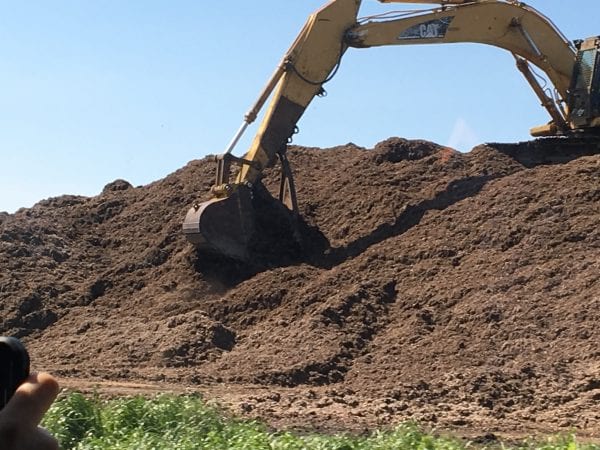 Apply high-quality biosolids produced by a well- operated treatment plant and applied by a reputable company. Request a laboratory analysis of the biosolids spanning a one- to two-year period. Look for nutrient levels, low trace metal concentrations, and low fecal coliform numbers. When in doubt, contact your fellow farmers who have used the biosolids from the company or contact ADEM to inquire about the track record of the treatment plant producing the biosolids and the company doing the application. Carefully check all application rate calculations to ensure that the correct amount is being applied.
Apply high-quality biosolids produced by a well- operated treatment plant and applied by a reputable company. Request a laboratory analysis of the biosolids spanning a one- to two-year period. Look for nutrient levels, low trace metal concentrations, and low fecal coliform numbers. When in doubt, contact your fellow farmers who have used the biosolids from the company or contact ADEM to inquire about the track record of the treatment plant producing the biosolids and the company doing the application. Carefully check all application rate calculations to ensure that the correct amount is being applied.- Avoid application to agricultural land any sewage land that was not treated or stabilized at a wastewater treatment facility. Untreated sludge cannot be considered biosolids unless it meets or exceeds the quality requirements in three areas: (1) low concentrations of nine metals listed in table 1, (2) low pathogen density equivalent to Class A biosolids, and (3) low vector attraction potential. Industrial sludge should not be confused with municipal sludge and should not be applied to agricultural lands unless marked safe and in compliance with EPA standards.
Animal Manure
Animal manure has been used as a soil amendment since ancient times. Animal manure contains feces and urine excreted by animals. Depending on the type of animal operation, animal manure can be either solid or liquid and may contain bedding materials. One example of animal manure that has bedding material is poultry manure. Poultry manure from the various segments of production differs widely in characteristics, appearance, moisture content, and nutrient value. Common poultry manure types are explained below.
Poultry litter is a mixture of poultry feces, spilled feed, feathers, and bedding materials (peanut hulls, wood shavings, sawdust, etc.). Poultry litter is an excellent soil amendment and slow-release fertilizer for row crops, pastures, and hay fields. Poultry litter can improve soil tilth, reduce soil compaction, and add organic matter and nutrients to increase soil fertility and productivity. Poultry litter can be applied either as fresh or composted manure.
Table 4. Nutrient Content (Dry Basis) of Commonly Used Poultry Manure
* Source: Nutrient Content of Fertilizer Materials (Extension publication ANR-0174)
Data source: International Journal of Poultry Science, 2019, DOI: 10.3923/ijps.2019.
| N | P2O5 | K2O | Ca | Mg | |
|---|---|---|---|---|---|
| Broiler litter (after 5 flocks) | 3.39 | 3.40 | 2.42 | 2.57 | 0.75 |
| Broiler litter (after 10 flocks) | 3.78 | 4.07 | 3.28 | 3 | 0.89 |
| Broiler cake | 3.72 | 3.96 | 2.98 | 2.85 | 0.8 |
| Litter cleaned out every 3 years | 3.84 | 3.89 | 2.69 | 2.61 | 0.76 |
| Liter stockpiled (dry stack) | 3.56 | 3.86 | 2.87 | 2.94 | 0.88 |
| Compost | 3.73 | 4.21 | 2.58 | 3.1 | 0.72 |
| Pullet | 2.8 | 4.83 | 2.40 | 3.5 | 0.8 |
| Breeders | 2 | 3.22 | 2.52 | 6.5 | 0.8 |
| Layer (caged)* | 1.5 | 1.3 | 0.5 | 6 | 0.4 |
The typical nutrient content of litter is provided in table 4. When using poultry litter as a nutrient source, farmers should consider the proper application rate, which depends on the litter nutrient analysis, soil test report, and crop nutrient requirements. Broiler litter can be further categorized into the following:
Broiler litter from total cleanout. Broiler litter is the manure that comes from chickens raised for meat. To limit buildup of wet manure and promote bird health, poultry farmers typically do a total cleanout of their poultry houses after 8 to 10 flocks (each flock is typically 42 to 55 days). This litter contains droppings of floor- raised chickens, along with bedding (usually wood shavings, peanut hulls, or sawdust), feathers, and wasted feed.
Broiler cake. Many poultry farmers do not perform a total cleanout due to the cost of bedding material and labor involved. Instead, after three or four flock cycles, these farmers remove from the surface 2 to 4 inches of fresh manure combined with bedding materials and spilled feed. This process is known as decaking or crusting. The decaking is performed using specialized equipment called a decaker, which is pulled by a tractor. The decaker separates the crusted cake from the bedding material by passing the cake over a grate that allows the fine materials to pass through and return to the floor while collecting the larger aggregations of cake in a hopper.
Broiler stockpiled litter. A stockpile litter consists of litter either from total cleanout or broiler cake stored in a pile under cover on an impervious surface for later use.
Composted broiler litter. Many farmers use fresh broiler litter and convert it into a uniform, stable, odorless, pathogen-free, soil-like material through a process known as composting. The composted litter is marketed to nursery owners, organic farmers, vegetable farmers, homeowners, and golf courses. Composted litter improves soil quality by adding organic matter, nutrients, and beneficial microorganisms.
Pullet litter. The manure that comes from a total cleanout of pullet houses is called pullet litter. A pullet is the technical term for a young female chicken that has not begun to lay eggs. The pullets are raised for approximately 20 to 22 weeks until they are taken to a breeder hen farm. The quality of litter coming from pullet houses is lower than that of broiler houses, primarily because the pullets are fed a limited diet and the bedding materials consist of deep shavings. Sometimes pullet houses are cleaned out after every flock or every two flocks depending on the presence of disease and integrator requirements.
Breeder litter. The manure that comes from breeder houses is referred to as breeder litter. The breeder farm receives pullets (young hens) that are approximately 20 to 22 weeks old. These hens produce fertile eggs for a hatchery until they are 43 to 60 weeks old, after which they are sent to slaughter. The eggs go to a hatchery where they are incubated to produce broiler chicks. The manure produced consists of bird droppings, spilled feed, and bedding material similar to broiler litter. The average nitrogen content of breeder manure is almost half that of broiler litter but their calcium content is two to three times greater than broiler litter.
Layer high-rise cleanout. Layers are the chickens that are raised for commercial egg production. The layers are kept in offset-stacked cages in the upper floor of the structure. The droppings from the birds are collected through a manure collection belt system or slot in the floor into the storage area or manure pit below. There are several different styles of cages, such as multi-level buildings or cage-free buildings, each with a unique manure collection systems (e.g., manure collection belt system). In high-rise systems, manure is accumulated for several months before it is cleaned out and stored in a covered storage structure area. The manure is either solid or semi-solid but dries out during the storage.
Layer lagoon sludge. When manure from layer houses is collected often, the manure is either scraped or flushed as slurry. The manure from these systems is stored in a separate earthen or concrete structure outside of the housing facility. Many of these storage structures are managed as anaerobic lagoons to treat the waste.
Lagoon effluent. Many layer houses also have egg wash facilities in a separate building. The egg washers remove manure and other debris, such as shells, broken eggs, and other organic materials and pump it to large holding ponds. The liquid is known as lagoon effluent.
Waste from poultry processing facilities. Chicken processing facilities generate poultry by-products (offal), which are managed differently than the chicken litter produced from broiler houses. Four kinds of by-products are mainly produced at the processing facilities: blood, feathers, chicken heads, and non-edible viscera. A fifth by-product (solids screened to a size 0.5 mm) is also separated from the screened wastewater used during processing.
All these by-products are picked up by a third party rendering company that transforms them into pet food, blood meal, feather meal, animal fat-based biodiesel, etc. The smaller solid particles that are left in the wastewater are separated using various treatment technologies, and the skimmings are rendered or picked up by third-party vendors who land apply it to fields. The wastewater stream undergoes anaerobic or aerobic treatments before being discharged or used for irrigating nearby fields.
Animal mortality compost. A common method of dealing with normal animal mortality is to compost. Chicken litter, a carbon source like wood shavings, and the animal carcasses are layered in a composting bin. Over the course of several weeks, the carcasses decompose. The bin is usually mixed or turned with the compost placed into a secondary bin to complete the process.
Composting of carcasses requires the correct ratio of carbon and nitrogen, along with adequate moisture. When done correctly, there should be no evidence of the carcass in the final product.
Composted animal mortality is to be spread on the farm of origin and requires a permit from the state veterinarian in order to be moved off that farm. The composting bins are typically included in the dry-stack storage barn for ease of loading and cleaning out on the impervious surface.
Following are important considerations when choosing poultry litter as an organic amendment:
- Poultry litter can vary both in moisture content and nutrient concentration due to numerous factors, such as production conditions, age of bird, diet, number of birds per flock, bedding material type, litter storage, and handling methods. Farmers should consider sending representative samples to a reputable laboratory to determine the level of nitrogen (N), P2O5 (P), and K2O (K) before applying to agricultural fields.
- If farmers are considering litter application to meet the N needs of the crop, they should pay attention to the phosphorus levels in soil. The plant P removal rate is three to four fold less than N removal. Repeated applications of litter can lead to buildup of P in soil over time. Additionally, most N in litter is in the organic form (70 to 85 percent) that requires mineralization before becoming available to plants. Mineralization is a slow process and varies between soil types, soil moisture content, temperature, and method of application. Around 40 to 70 percent of the total nitrogen is available during the first year, whereas the remaining nitrogen requires more than one growing season to be plant available.
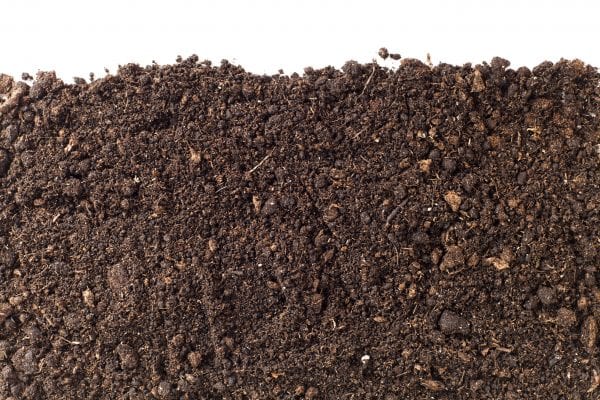 Around 50 to 60 percent of phosphorus and 75 to 80 percent of potassium in litter is considered to be plant available immediately after application or after rainfall events. However, P is highly reactive and gets tied up by soil quickly, especially for soils that are rich in iron and aluminum oxides. If row crop or hay farmers are considering litter application to meet the plant P and K needs, they should avoid applying litter several months ahead of planting.
Around 50 to 60 percent of phosphorus and 75 to 80 percent of potassium in litter is considered to be plant available immediately after application or after rainfall events. However, P is highly reactive and gets tied up by soil quickly, especially for soils that are rich in iron and aluminum oxides. If row crop or hay farmers are considering litter application to meet the plant P and K needs, they should avoid applying litter several months ahead of planting.- It is a required practice to keep records of manure applications and off-site transfers. Accurate records will document the proper use of animal manure and serve as evidence for regulatory authorities, if needed. Good environmental stewardship practices related to manure usage involve avoiding excessively high application rates and basing application rates on soil test reports, manure analysis reports, and crop nutrient requirements.
- It is also a good practice to keep the litter spreader calibrated to deliver the right rate as accurately as possible. Avoid applying litter on steep lands having slopes more than 10 percent. Observe ADEM- required setback distances, and refer to the guidance document at www.adem.state.al.us/programs/water/waterformsADEM-NRCSAFOBufferSum.pdf. Do not apply litter if a significant rainfall event is predicted within 72 hours. Also, do not apply litter on a windy day to avoid conflict with neighbors.
Disclaimer: The content of this material was prepared for educational purposes only and should not be relied upon to determine legal obligations or regulation purposes.
 Rishi Prasad, Extension Specialist, Assistant Professor, and Kent Stanford, Assistant Extension Professor, both in Crop, Soil, and Environmental Sciences at Auburn University
Rishi Prasad, Extension Specialist, Assistant Professor, and Kent Stanford, Assistant Extension Professor, both in Crop, Soil, and Environmental Sciences at Auburn University
Reviewed March 2022, Applying Soil Amendments of Organic Origin to Agricultural Land, ANR-2634

